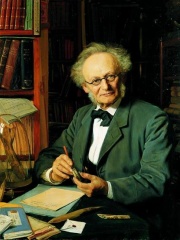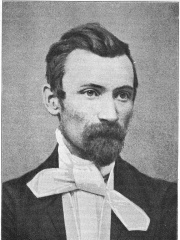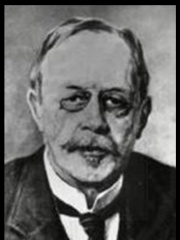
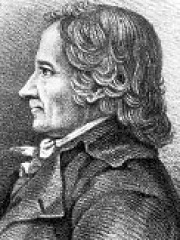
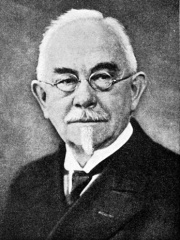
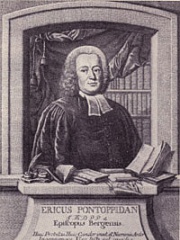
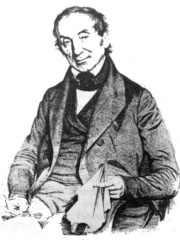
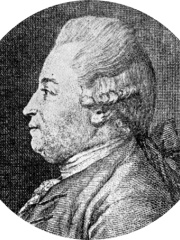
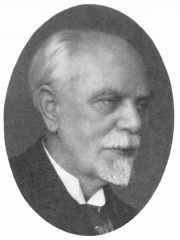
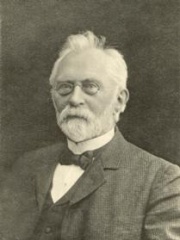
The Most Famous
BIOLOGISTS from Denmark
This page contains a list of the greatest Danish Biologists. The pantheon dataset contains 1,097 Biologists, 14 of which were born in Denmark. This makes Denmark the birth place of the 14th most number of Biologists behind Czechia, and Japan.
Top 10
The following people are considered by Pantheon to be the top 10 most legendary Danish Biologists of all time. This list of famous Danish Biologists is sorted by HPI (Historical Popularity Index), a metric that aggregates information on a biography's online popularity. Visit the rankings page to view the entire list of Danish Biologists.

1. Hans Christian Gram (1853 - 1938)
With an HPI of 69.56, Hans Christian Gram is the most famous Danish Biologist. His biography has been translated into 45 different languages on wikipedia.
Hans Christian Joachim Gram (13 September 1853 – 14 November 1938) was a Danish bacteriologist who developed the Gram stain, still a standard technique to classify bacteria and visualize them under a microscope.

2. Johan Christian Fabricius (1745 - 1808)
With an HPI of 68.68, Johan Christian Fabricius is the 2nd most famous Danish Biologist. His biography has been translated into 42 different languages.
Johann Christian Fabricius (7 January 1745 – 3 March 1808) was a Danish zoologist, specialising in "Insecta", which at that time included all arthropods: insects, arachnids, crustaceans and others. He was a student of Carl Linnaeus, and is considered one of the most important entomologists of the 18th century, having named nearly 10,000 species of animals, and established the basis for the modern insect classification.

3. Wilhelm Johannsen (1857 - 1927)
With an HPI of 66.77, Wilhelm Johannsen is the 3rd most famous Danish Biologist. His biography has been translated into 32 different languages.
Wilhelm Johannsen (3 February 1857 – 11 November 1927) was a Danish pharmacist, botanist, plant physiologist, and geneticist. He is best known for coining the terms gene, phenotype and genotype, and for his 1903 "pure line" experiments in genetics.

4. Erik Pontoppidan (1698 - 1764)
With an HPI of 64.58, Erik Pontoppidan is the 4th most famous Danish Biologist. His biography has been translated into 28 different languages.
Erik Ludvigsen Pontoppidan (24 August 1698 – 20 December 1764) was a Danish author, a Lutheran bishop of the Church of Norway, a historian, and an antiquarian. His Catechism of the Church of Denmark heavily influenced Danish and Norwegian religious thought and practice for roughly the next 200 years after its 1737 publication.
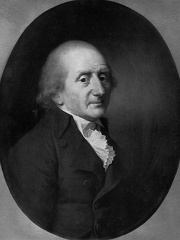
5. Morten Thrane Brünnich (1737 - 1827)
With an HPI of 64.42, Morten Thrane Brünnich is the 5th most famous Danish Biologist. His biography has been translated into 27 different languages.
Morten Thrane Brünnich (30 September 1737 – 19 September 1827) was a Danish zoologist and mineralogist.

6. Nathaniel Wallich (1786 - 1854)
With an HPI of 64.23, Nathaniel Wallich is the 6th most famous Danish Biologist. His biography has been translated into 23 different languages.
Nathaniel Wolff Wallich (28 January 1786 – 28 April 1854) was a surgeon and botanist of Danish origin who worked in India, initially in the Danish settlement near Calcutta and later for the Danish East India Company and the British East India Company. He was involved in the early development of the Calcutta Botanical Garden, describing many new plant species and developing a large herbarium collection which was distributed to collections in Europe. Several of the plants that he collected were named after him.

7. Otto Friedrich Müller (1730 - 1784)
With an HPI of 63.10, Otto Friedrich Müller is the 7th most famous Danish Biologist. His biography has been translated into 23 different languages.
Otto Friedrich Müller, also known as Otto Friedrich Mueller (2 November 1730 – 26 December 1784) was a Danish naturalist and scientific illustrator.

8. Christen C. Raunkiær (1860 - 1938)
With an HPI of 63.01, Christen C. Raunkiær is the 8th most famous Danish Biologist. His biography has been translated into 22 different languages.
Christen Christensen Raunkiær (29 March 1860 – 11 March 1938) was a Danish botanist, who was a pioneer of plant ecology. He is mainly remembered for his scheme of plant strategies to survive an unfavourable season ("life forms") and his demonstration that the relative abundance of strategies in floras largely corresponded to the Earth's climatic zones. This scheme, the Raunkiær system, is still widely used today and may be seen as a precursor of modern plant strategy schemes, e.g. J. Philip Grime's CSR system.

9. Eugenius Warming (1841 - 1924)
With an HPI of 62.71, Eugenius Warming is the 9th most famous Danish Biologist. His biography has been translated into 27 different languages.
Johannes Eugenius Bülow Warming (3 November 1841 – 2 April 1924), known as Eugen Warming, was a Danish botanist and a pioneering figure in the development of ecology. In 1895 Warming published Plantesamfund, often regarded as the first textbook (1895) on plant ecology, and he taught an early university course in ecology. Scholar R. J. Goodland wrote in 1975: “If one individual can be singled out to be honoured as the founder of ecology, Warming should gain precedence”. Warming wrote a number of textbooks on botany, plant geography and ecology, which were widely read and translated to several languages. Notable works include Plantesamfund and Haandbog i den systematiske Botanik.
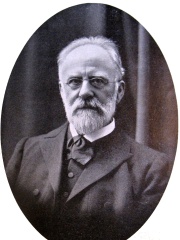
10. Emil Christian Hansen (1842 - 1909)
With an HPI of 60.38, Emil Christian Hansen is the 10th most famous Danish Biologist. His biography has been translated into 18 different languages.
Emil Christian Hansen (8 May 1842 – 27 August 1909) was a Danish mycologist and fermentation physiologist.
People
Pantheon has 14 people classified as Danish biologists born between 1698 and 1877. Of these 14, none of them are still alive today. The most famous deceased Danish biologists include Hans Christian Gram, Johan Christian Fabricius, and Wilhelm Johannsen.
Deceased Danish Biologists
Go to all RankingsHans Christian Gram
1853 - 1938
HPI: 69.56
Johan Christian Fabricius
1745 - 1808
HPI: 68.68
Wilhelm Johannsen
1857 - 1927
HPI: 66.77
Erik Pontoppidan
1698 - 1764
HPI: 64.58
Morten Thrane Brünnich
1737 - 1827
HPI: 64.42
Nathaniel Wallich
1786 - 1854
HPI: 64.23
Otto Friedrich Müller
1730 - 1784
HPI: 63.10
Christen C. Raunkiær
1860 - 1938
HPI: 63.01
Eugenius Warming
1841 - 1924
HPI: 62.71
Emil Christian Hansen
1842 - 1909
HPI: 60.38
Japetus Steenstrup
1813 - 1897
HPI: 58.06
Johan Lange
1818 - 1898
HPI: 56.77
Overlapping Lives
Which Biologists were alive at the same time? This visualization shows the lifespans of the 13 most globally memorable Biologists since 1700.

